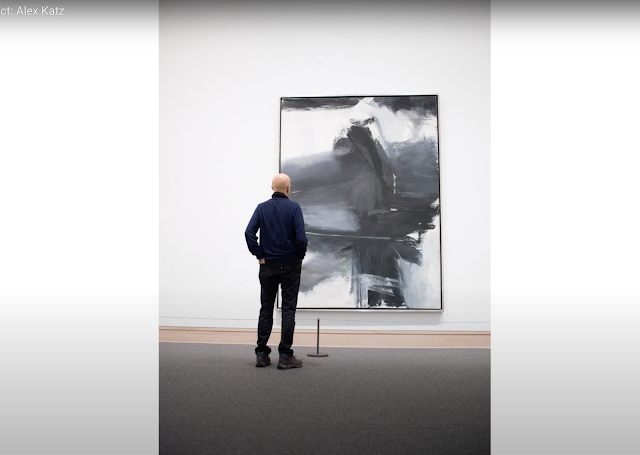KLINE IN TECHNOCOLOR
(For Alex Katz)
FRANZ KLINE
Kline was the true bohemian artist. Maybe the best of his time.
- Alex Katz
ABOUT
Franz Kline was born on May 23 1910 in Wilkes-Barre Pennsylvania. He studied painting and drawing at Boston University (1931–35) and drafting and illustration at the Heatherley School of Fine Art London (1937–38). After returning to the United States he settled in New York where he produced traditional cityscapes and interior scenes and in the early 1940s won awards at several National Academy of Design Annuals. Kline soon began experimenting with small black-and-white brush drawings after Willem de Kooning introduced him to abstraction. At the end of the decade De Kooning’s use of a Bell-Opticon projector inspired Kline to project his brush drawings onto his studio wall transforming them into large-scale ideograms. These experiments marked the beginning of Kline’s characteristic abstractions incorporating powerful lines and rapidly developed gestures of black paint on white ground. Compositions such as Wotan (1950–51) prompted speculation about the influence of East Asian calligraphy on Kline’s practice he denied these claims stating that he fully intended the images to evoke the known or recognizable while avoiding literal references. Kline employed intense tonal contrasts often working at night under strong light. His use of housepainters’ brushes produced tiny splatters and inflections on the canvas that enhanced the explosive quality of his black lines. Like many fellow Abstract Expressionists such as De Kooning and Mark Rothko, Kline took his work in several different directions in the late 1950s. He produced a sequence of exceptionally large horizontally oriented works known as the “wall paintings” (1959–61) the monumentality of which would be echoed in later paintings by Robert Motherwell and Clyfford Still. He also introduced harsh and strident color as in King Oliver (1958). He spent a month in Europe traveling mostly in Italy in 1960. Two years later at the peak of his career Kline died of heart failure on May 13 1962 in New York. In the decade before his death Kline’s work was included in numerous international exhibitions including the Venice Biennale (1956, 1960) Documenta Kassel West Germany (1959) São Paulo Biennial (1957) and Whitney Annuals and Biennials (1952, 1953, 1955, 1961). The Washington Gallery of Modern Art Washington D.C. organized a memorial exhibition (1962). Major monographic exhibitions have also been held at the Whitney Museum of American Art New York (1968) Phillips Collection Washington D.C. (1979) Cincinnati Art Museum (1985) Menil Collection Houston (1994) Fundació Antoni Tàpies Barcelona (1994) and Castello di Rivoli–Museo d’arte contemporanea Italy (2004).
Credits
-Special Thanks you to the Guggenheim, The Metropolitan Museum of Art and Alex Katz
Here's a series of Kline's B/W studies.
Quick ink gesture drawings many on old "phone book" pages.
#freepaper
You just saw the #SWANKTASTIC paintings of Franz Kline.
#KLINEINTECHNOCOLOR
































